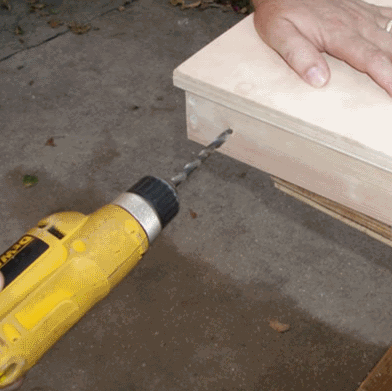
Trees are comprised mostly of water.
Any Boy Scout who has ever tried to light a campfire with freshly-cut wood knows that such green wood is far too wet to burn.
This is because a tree’s cellular structure is designed to allow sap (which is mostly water) to flow throughout the tree.
Some wood varieties literally drip with moisture when they are cut. Freshly-cut wood is simply not conducive to woodworking, as it must be dried considerably.
This is why lumber manufacturers will either store lumber for air-drying of bake it in ovens, called kiln-drying.
The Ideal Stock for Woodworking
Ideal stock for woodworking should be at a state of equilibrium with the environment in which the finished project will reside.
There are a couple considerations to keep in mind here:
1. Wood will either take humidity from or return humidity to the air.
In some climates, certain times of the year are much more humid than other times.
The Upper Midwest of the U.S. is a perfect example: while summers are quite humid, winter air can be very dry, enough so that people will use humidifiers in the winter to put moisture into the air.
This difference in seasonal humidity is why doors and dresser drawers will stick in the summer time but move freely in the winter.
2. A piece of furniture which is at a state of equilibrium with it’s environment when it is manufactured in a humid place like Miami will undergo an eventual “culture shock” if it is moved to a dry location like Phoenix.
Eventually, the wood will give a lot of moisture to the air in an attempt to equalize with its environment.
If the woodworker doesn’t plan accordingly when building the piece, cracking is a very real possibility.
How Does Wood Expand?
Knowing that wood will naturally attempt to equalize with the humidity in it’s environment, a woodworker must know how the wood will expand.
Movement in a piece of stock will occur across the grain, as opposed to along the grain.
That is to say, a 1×6 that is four feet long will almost always stay four feet long.
However, depending on the moisture content of the stock and the air (and the variety of wood used), the width and thickness (to a lesser extent) may vary considerably.
Tips for Dealing With Expansion
When building a carcass for a cabinet, each of the four sides of the box should have the grain oriented in the same direction.
As such, all four sides should grow relatively equally (particularly if all four come from the same piece of original stock).
This, however, can cause issues when drawers are used in the cabinet, making the drawers difficult to open & close.
This is why most cabinet carcasses are built using plywood, which isn’t affected by humidity nearly as much as dimensional lumber.
When gluing up a few boards to make a table top, not only should the grain of each of the boards be in the same direction and boards be matched so that consecutive boards have similar colors, but the end grains should be in opposite directions.
In other words, when one board is laid with the end grain (indicative of cupping) facing up, the next board should be facing down, then up, and so on.
This will help “balance out” any cupping that may occur.
When orienting such a top on a structure such as a desk, it should be laid so that the end-grains of the boards are on the two short sides of the table.
To connect it the the top to the structure, screw the front side of the desk so that no movement can occur, but on the opposite (back) side, screws should be affixed in slots to allow the boards to widen or narrow.
Failure to account for such movement may eventually lead to cracking (shrinkage) or excessive cupping (expansion) in the table top.
